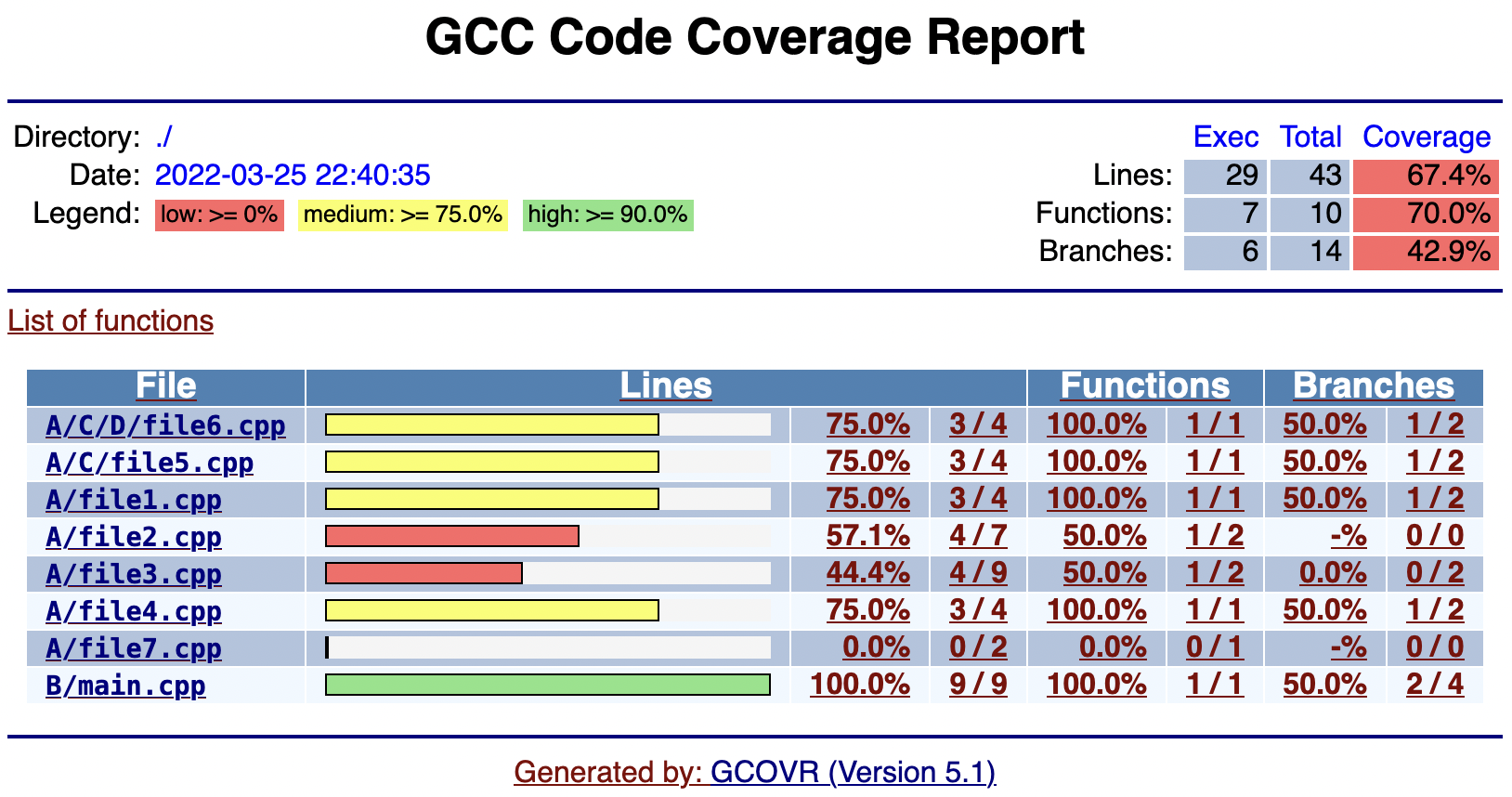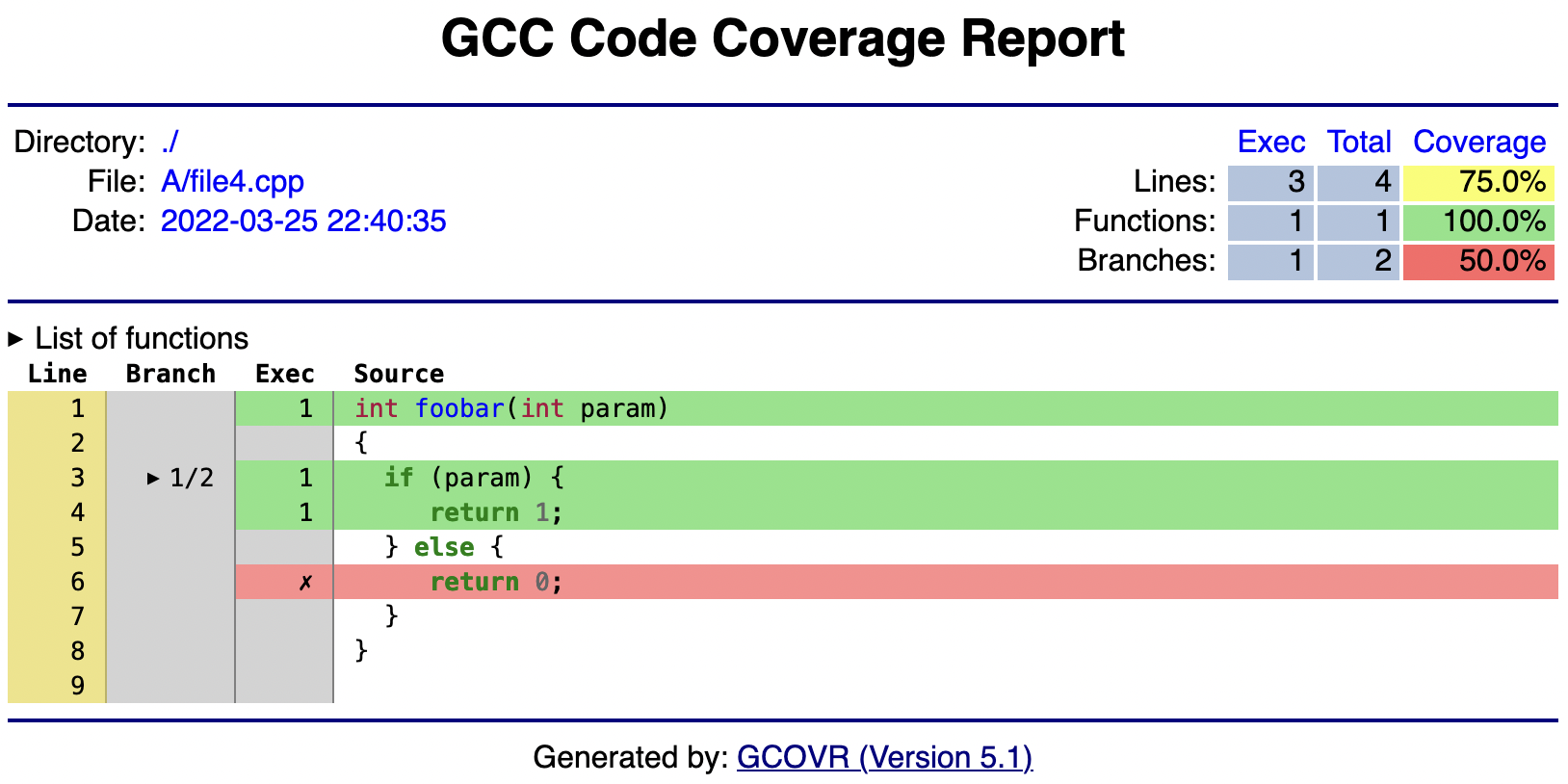HTML Output¶
The gcovr command can also generate a simple
HTML output using the --html option:
gcovr --html
This generates a HTML summary of the lines executed. In this
example, the file example1.html is generated, which has the
following output:

The default behavior of the --html option is to generate
HTML for a single webpage that summarizes the coverage for all files. The
HTML is printed to standard output, but the -o/--output
option is used to specify a file that stores the HTML output.
The --html-details option is used to create
a separate web page for each file. Each of these web pages includes
the contents of file with annotations that summarize code coverage. Consider
the following command:
gcovr --html-details example_html.details.html
This generates the following HTML page for the file example1.cpp:

Note that the --html-details option needs
a named output, e.g. via the the -o/--output option.
For example, if the output is named coverage.html,
then the web pages generated for each file will have names of the form
coverage.<filename>.html.
The --html-self-contained option controls
whether assets like CSS styles are bundled into the HTML file.
The --html report defaults to self-contained mode.
but --html-details defaults to
--no-html-self-contained
in order to avoid problems with the Content Security Policy
of some servers, especially Jenkins.
New in version 5.0: Added --html-self-contained
and --no-html-self-contained.
Changed in version 5.0: Default to external CSS file for --html-details.